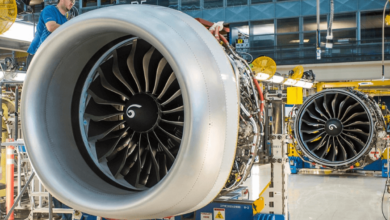Smarter Infrastructure for Smarter Operations

Modern businesses are no longer satisfied with simply keeping operations running. They are driven by efficiency, flexibility, and the ability to adapt quickly to changing environments. At the core of this evolution is a shift toward smarter infrastructure—systems and technologies that power more connected, responsive, and effective business operations.
Understanding Smarter Infrastructure
Traditional infrastructure relied heavily on physical assets and manual management. While these systems once delivered reliability, they often left organizations grappling with inefficiencies, downtime, and missed opportunities for innovation. Smarter infrastructure is about integrating intelligence, automation, and connectivity into every layer of the operational landscape.
But what does “smart” actually mean here? It means infrastructure enabled by digital technologies such as IoT (Internet of Things), advanced analytics, artificial intelligence, and cloud computing. These elements work in concert to create a highly adaptive environment that can sense, respond, and optimize operations in real-time.
See also: Streamline Access Control for Commercial Properties and Offices
Why Smarter Infrastructure Matters
Organizations that prioritize smarter infrastructure are able to:
- Reduce operational costs through predictive maintenance and automated resource management.
- Enhance agility by scaling critical systems up or down with demand.
- Minimize unplanned downtime thanks to real-time monitoring and proactive interventions.
- Drive continuous improvement by leveraging data from multiple sources to uncover inefficiencies and areas for growth.
Ultimately, smarter infrastructure doesn’t just support operations; it transforms them.
The Key Components of Smarter Infrastructure
IoT Devices and Sensors
Smart infrastructure starts at the edge. IoT sensors gather real-time data from equipment, facilities, and even the supply chain. For example, temperature sensors in warehouses can help maintain product quality, while vibration sensors on factory equipment predict breakdowns before they happen.
Cloud-Based Platforms
No matter how much data you collect, it’s useless if it’s locked away in silos. Cloud solutions centralize data storage and processing, providing universal access and unlocking powerful analytics capabilities. Modern cloud platforms scale seamlessly with business needs and integrate with existing on-premise systems for hybrid solutions.
Advanced Analytics and Artificial Intelligence
Smart data leads to smart decisions. AI-powered analytics engines turn streams of raw information into actionable insights. Machine learning models forecast trends, identify bottlenecks, and recommend process improvements that keep operations efficient and future-ready.
Automation and Orchestration
Automated workflows, powered by sophisticated orchestration tools, free employees from repetitive tasks while ensuring round-the-clock precision. Whether it’s automatically routing calls in a contact center or restocking shelves with autonomous robots, automation streamlines operations and increases consistency.
Cybersecurity and Resilience
With more devices online, security is critical. Smarter infrastructure includes layered cybersecurity solutions and built-in redundancies that protect critical operations against digital threats and physical disruptions.
Steps to Adopt Smarter Infrastructure
Implementing smarter infrastructure isn’t about swapping out every legacy component overnight. It’s about strategic, phased investment:
1. Assess Current Operations
Conduct a digital maturity audit of your existing infrastructure. Identify outdated systems, pain points, and the most promising opportunities for improvement.
2. Develop a Roadmap
Create a clear vision of modern, agile operations. Prioritize technologies that align with this vision and promise measurable ROI.
3. Start Small, Scale Fast
Pilot projects in select departments to test new solutions, prove value, and gather buy-in before broad deployment.
4. Foster a Culture of Innovation
Empower your workforce with training and tools to adapt to smarter systems. Encourage collaboration between IT and business units for seamless integration.
5. Partner with Experts
Work with technology providers and consultants who bring a deep understanding of both infrastructure, edge solutions, and your industry’s unique challenges.
Conclusion
The future of efficient, resilient operations is undeniably digital. With smarter infrastructure, organizations can streamline everything from supply chains to customer engagement, reduce costs, and unlock new possibilities for growth.




